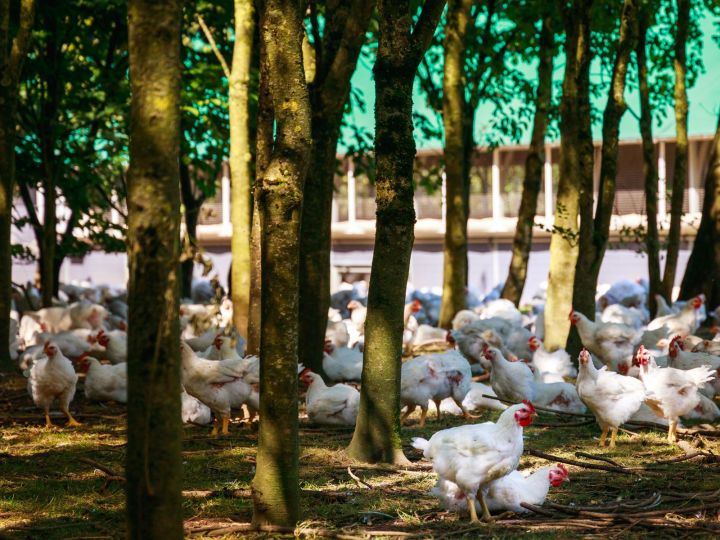Packed with a distinctive flavour and robustly textured, duck leg is a versatile cut that can be dressed up for posh suppers or kept low-key for simple weekday meals. Because it’s rich, it makes a perfect partner for all sorts of bold ingredients, including tart fruits and hot spices. With duck specialities putting in an appearance in most styles of cuisine, this is a cut with plenty of potential.
Taste & Texture
In the same way that there’s a clear distinction between chicken breast and leg, on the duck carcass, breast meat and leg meat are very different. While the breast is tender and distinguished by a layer of sweet fat, the leg is more robustly textured and fairly lean. As you might imagine, the muscles on a duck’s leg have worked hard, so they’re well developed, with strong fibres and good definition. This means that when cooked, duck leg can hold its shape or be pulled apart into strands.
The flavour is hearty and rich, with an intensity that makes this an excellent choice for both simple recipes and more complex pairings. There’s a good reason duck appears regularly on Thai menus – it’s able to stand up to acidic lime and hot-hot chilli without folding under the pressure. But it’s equally happy accompanied by the forest-floor flavours of earthy mushroom and woody herbs, the sour juiciness of blackberries and sweet-tartness of cherries.
Where It's Cut From
Well, you probably guessed the answer to this… Because of its size, it’s usual for duck leg to comprise both the thigh and the drumstick. Which means within the cut you get a little bit of variation in texture, with the drumstick portion being a little less yielding than the thigh but equally flavoursome.
How To Cook It
Duck leg can suffer a little from dryness, so the trick to getting the best results is to keep things moist. That means a quick, hot cook or a slow cook with plenty of liquid. If you plan to use the meat in a curry or a stir-fry, for example, gently poaching the leg in water or stock will give you tender results and make it easy to pick the bone. Super-slow casseroling yields similarly juicy results, while quick roasting gives you the winning combo of crispy skin with succulent meat. Just make sure you sear the outside until it starts to turn golden, then roast in a moderate oven (about 180°C fan) for half an hour.
Give It A Try
As duck leg is so flavour-packed you can choose to go super simple (think quickly roasted and served with a citrusy salad and some crispy fries), Oriental (poached leg, shredded and served in Chinese pancakes with cucumber, spring onion and hoisin sauce) or comforting (slowly casseroled with herbs and mushrooms and served with creamy mash and buttery cabbage). Alternatively:
-poach your duck leg in stock, pick off the meat and add it to a Thai green curry, balancing the heat of chilli with creamy coconut and adding lots of crunchy veg.
-lay duck legs on a bed of thickly sliced potatoes, peeled shallots and whole garlic cloves. Add plenty of sprigs of thyme, pour over enough dry cider to cover the potatoes and roast in a moderate oven for an hour or so. Serve with spiced red cabbage.
-pick the meat off some quickly roasted duck leg and serve it as part of a deli board with creamy Gorgonzola, smoked Cheddar, rustic bread and sour pickled cucumbers.



